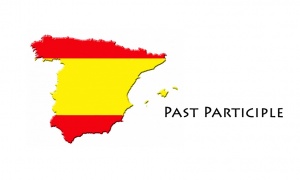Language/Spanish/Grammar/Past-Participle
In Spanish, the Past Participle is an essential aspect of grammar, used in present, past, and future perfect tenses, as well as in some cases with the verb "to be." As you may already know, verbs in Spanish are divided into those that end in -ar, -er, and -ir, and each type of verb has its own set of rules for forming the past participle. 📚
After mastering the Past Participle, you might also want to explore other related topics, such as the Present Progressive tense, which will help you express ongoing actions in Spanish. Additionally, it's essential to be aware of the Common Mistakes that learners often make, so you can avoid them and improve your Spanish skills. Finally, don't forget to check out our guide on Definite and Indefinite Articles to better understand how to use articles in Spanish. 😊
Regular Verbs[edit | edit source]
When you want to form Past Participle with a regular verb, you need to erase ar, er or ir and put the corresponding ending. The next table shows you the endings for each type of verb.
| Verb | Verbo | Ending | Participio | Participle |
|---|---|---|---|---|
| To escape | Escapar | ado | Escapado | Escaped |
| To walk | Caminar | ado | Caminado | Walked |
| To lose | Perder | ido | Perdido | Lost |
| To obtain | Obtener | ido | Obtenido | Obtained |
| To run away | Huir | ido | Huido | Run Away |
| To add | Añadir | ido | Añadido | Added |
Irregular Verbs[edit | edit source]
Irregular Verbs change their base form completely and they are some verbs that end in er and ir (they generally end in o), the next table show you some examples.
| Verb | Verbo | Participio | Participle |
|---|---|---|---|
| To do/make | Hacer | Hecho | Done |
| To put | Poner | Puesto | Put |
| To open | Abrir | Abierto | Open |
| To say/tell | Decir | Dicho | Said |
Other Lessons[edit | edit source]
- Negation
- Plurals
- El Verboide
- How to use Ser o Estar (verb to be)
- Comaratives and Superlatives
- Conjugación de verbos difíciles
- The word that cannot be written
- Orientación sobre el uso de Articulos
- Los pronombres personales
- Questions

